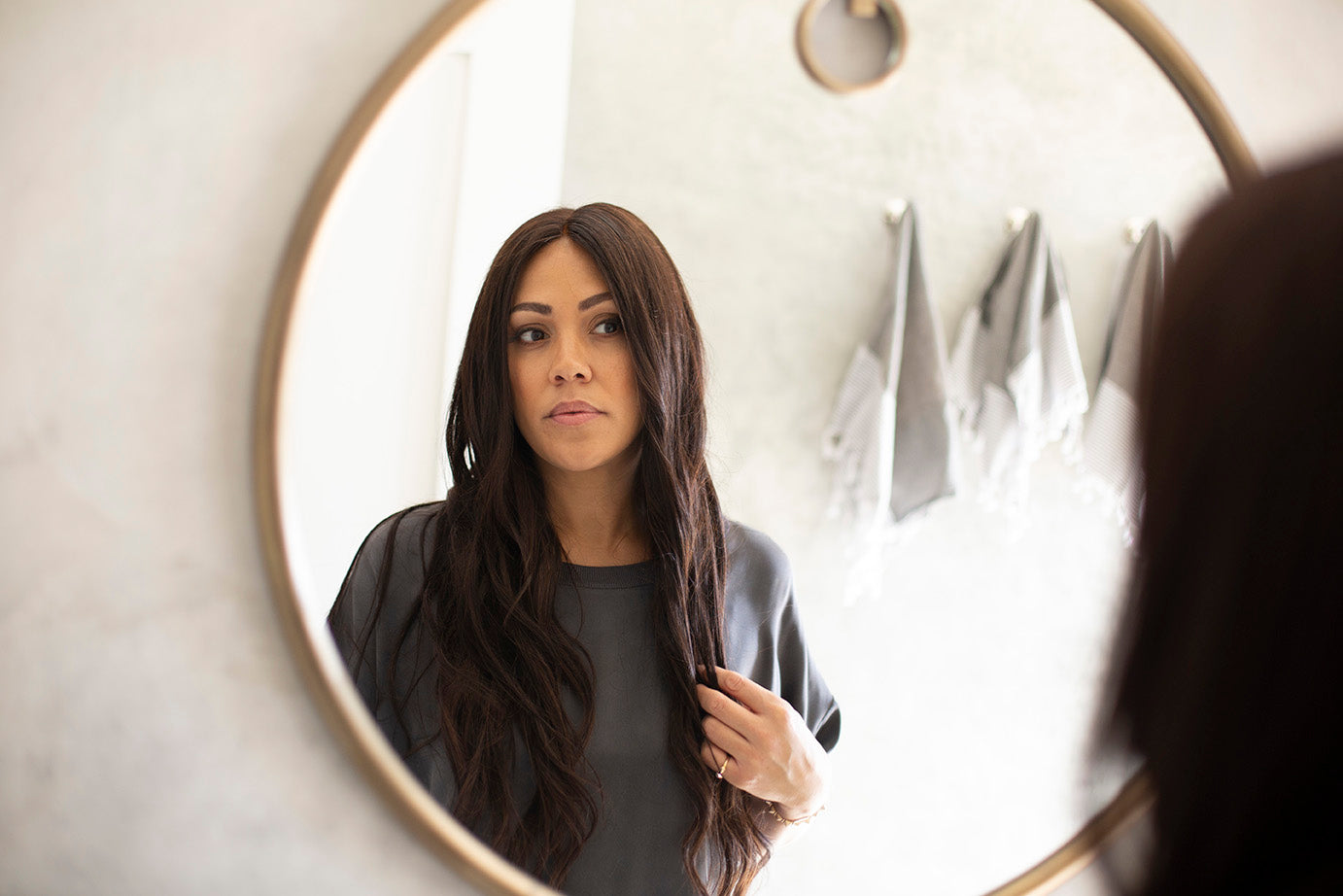
How To Treat Acne: 4 Things To Always Do and 3 To Avoid
We’ve all been there: You wake up on the morning of a big date or meeting, only to find a huge blemish (or several) in the middle of your forehead, chin, or some other prominent part of your face. While it might seem like ill-timed breakouts are just a fact of life, Shani is here to tell you that prevention is totally possible. Here, she breaks down the do’s and don’ts of how to treat acne, both chronic and occasional. Follow her advice, and prepare to see a drastic reduction in skin-related SOS moments.
Shani’s Acne Do’s:
1. Exfoliate to keep pores clear: “When dead skin cells, bacteria, and your skin’s natural oils collect in your pores, acne can result. This is why exfoliation is so key—it eliminates those cells before they can build up and cause acne problems. I recommend exfoliating with products that contain glycolic or lactic acid. One of my favorites is the Dr. Dennis Gross Alpha Beta Peel. It helps keep pores clear without being too harsh on skin.”
2. Use retinol to reduce texture and uneven skin tone: “Retinol is very effective for improving skin's overall texture and minimizing the appearance of dark spots and dullness. Plus, it’s the best ingredient for reducing fine lines, wrinkles, and other signs of aging—key for those with adult acne. I always recommend my Retinol Reform® serum to clients with acne-prone skin. Just remember that if you’re using an exfoliator with acids, like the Dr. Dennis Gross Alpha Beta Peel, don’t use it on the same night as retinol.”
3. Avoid acne triggers in your diet: “If you’re wondering how to get rid of acne, know that the right skin-care products will only get you so far. There are many internal factors that contribute to breakouts, and diet is a big one. Whenever I have a client with acne, I have them eliminate dairy for a few weeks, since these products contain hormones that can impact the skin. A lot of the time, they’ll find their breakouts clear up. Caffeine, sugar, refined carbs, and processed foods are also acne triggers for some people. Like dairy, you can drop them from your diet for a few weeks to see how they affect your skin—just make sure to only eliminate one food group at a time, so you’re able to accurately pinpoint which one you’re sensitive to.”
4. Use phototherapy to control breakouts and fade scars: “LED light is one of my secret weapons for clients with acne problems. The LightStim for Acne has a mix of blue and red lights that kill bacteria and calm inflammation. The best part? You can use these tools at home while you’re lounging on the couch watching Netflix.”
Shani’s Acne Dont's:
1. Don’t clog your pores with the wrong moisturizer: “I see so many clients with congestion and breakouts due to using the wrong moisturizer. People with acne-prone skin tend to use harsh products that overdry their skin, and then they use a heavy, oil-packed moisturizer to combat the dryness and peeling. First of all, stripping your skin is never a good idea. (See my next tip!) Just as importantly, an oil-free formula like my Daily Oil-Free Moisturizer will hydrate skin without clogging pores and causing breakouts.”
2. Don’t over-treat your skin: “As I mentioned before, attacking your skin with harsh cleansers, scrubs, and drying masks only makes acne problems worse. Products like these can dehydrate skin and cause inflammation. In reality, you only need to exfoliate twice a week, max. Opt for a chemical exfoliant, like Dr. Dennis Gross’ Alpha Beta Peel, rather than a grainy scrub that can cause micro-tears on your skin’s surface and exacerbate acne. And choose a gentle, non-stripping cleanser–my acne-prone clients love my Daily Cleansing Serum.”
3. Don’t overhaul your skin care routine all at once: “If you want to experiment with new products to treat your acne, start with one and wait a week before adding another. That way, if you experience an improvement in your acne—or a flare-up—you’ll know exactly what caused it.”


